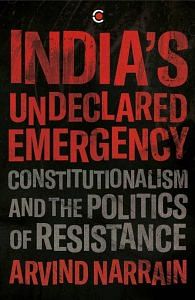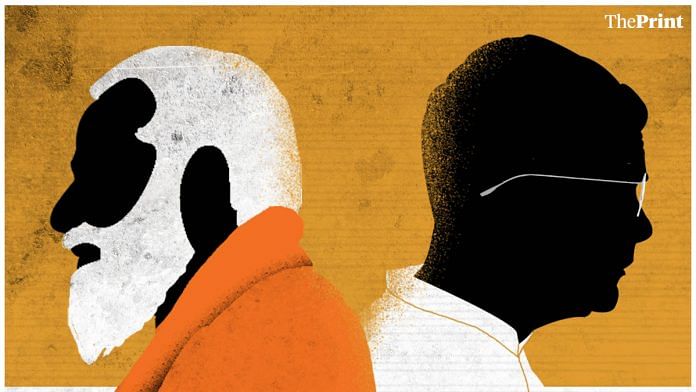Today, the Emergency is largely remembered for mass sterilisations and slum demolitions, both difficult to characterise as pro-people or socialist. As the Shah Commission documented, the mass arrest of trade unionists under MISA further punctured any serious claim to a socialist direction.
The main rationale for the priorities of the regime shifting to these two points lay in the quirks of Sanjay Gandhi’s leadership and preferences. The fact that the government’s policy priorities depended so much on his proclivities meant that the nature of the regime could be best understood through the sociologist Max Weber’s characterisation of ‘sultanism’—‘a regime marked by the extreme development of the ruler’s discretion’.
Crucially, the Emergency regime never succeeded in building a level of popular support for its programmatic thrust. Jaffrelot argues that the policy of the State during the Emergency was not to activate the support of the people and make changes in favour of ‘pro poor policies’, but rather to ‘encourage the depoliticisation of society—of universities, factories and the countryside’. The response of the citizens to the Emergency ‘was sullen, not enthusiastic’, as historian Gyan Prakash notes in The Emergency Chronicles.
Clearly, the Modi regime too has ‘sultanist’ characteristics, illustrated in the arbitrariness of the decision to impose demonetisation in 2016 and a hasty and unplanned nationwide lockdown during the Covid-19 pandemic in 2020. The regime is also based on a cult of personality centred on Modi. Images of the prime minster dominate most advertisements issued by the Central government and BJP-led state governments, as do references by the BJP to the ‘able, sensitive, committed and visionary leadership of Prime Minister Shri Narendra Modi’ on many issues, including containing the covid-19 pandemic.
However, there are at least six factors which mark Modi’s rule as inaugurating a new kind of State, going beyond the ‘authoritarian’ or ‘sultanist’ features that it shares with the Emergency period.
Firstly, unlike the Emergency rule which had only a flimsy ideological commitment to socialist revolution, there is a clear thread unifying the actions of the Modi government—its ideological moorings in Hindutva are absolutely key to understanding the regime. In his book Bunch of Thoughts, the prominent Hindutva ideologue M.S. Golwalkar points out that the essence of the nation is ‘the Hind race with its Hindu Religion, Hindu Culture and Hindu Language (the natural family of Sanskrit and her off springs) . . . In Hindustan exists and must needs exist the ancient Hindu nation and nought else but the Hindu Nation. All those not belonging to the national i.e. Hindu Race, Religion, Culture and Language, naturally fall out of the pale of real “National” life’.
In Golwalkar’s terminology, the three internal threats to the Hindu nation are Muslims, Christians and Communists. Hindutva ideology at its core strives to unite and strengthen the Hindu community, demonise and stigmatise the enemy and assert the superior national rights of Hindus in India.
Also read: Hindu-vs-Hindutva, Priyanka ‘experiment’ — the strategy Congress is prepping for 2022 & beyond
Secondly, the Modi regime draws its support from the vast civil society networks of the Rashtriya Swayamsevak Sangh (RSS), unlike Indira Gandhi’s rule, which was largely dependent on the coercive power of the State alone to take forward its objective. A right-wing volunteer network, the RSS is reputed to be the largest civil society organisation in the world. Andersen and Damle in their book Messengers of Hindu Nationalism document the extent of the RSS’s spread.
They note the presence of platforms and organisations for different spheres of social, cultural, political and professional life—there is the Akhil Bharatiya Vidyarthi Parishad for students, Akhil Bharatiya Adhivakta Parishad for advocates and the judiciary, Arogya Bharati for public health, Bharatiya Mazdoor Sangh for labour, Bharatiya Kisan Sang for farmers, Bharat Vikas Parishad for social service, Bharatiya Itihas Sankalan Yojana for history, Balagokulam for children’s cultural organisation, Gau Samvardhan for cow protection, and so on.
Thirdly, the Modi regime is genuinely popular among the people, as seen by the BJP’s back-to-back electoral victories. This was not true of the Indira Gandhi Emergency regime, support for which ‘was sullen, not enthusiastic’. In India, images of people queuing uncomplainingly outside dysfunctional ATMs after demonetisation or of people obediently and jubilantly banging pots during the covid-19 lockdown on the prime minister’s command have underscored Modi’s popularity and are testament to his mass base and ability to control and dominate societal ways of thinking.
This form of domination over the social common sense has been achieved through most of the mainstream media becoming a platform for lauding the prime minister and remaining faithful to his rule rather than to democratic principles. The media also helps in the spread of the Hindutva ideology by enabling hate speech against minorities and crystallising and deepening the ‘communal common sense’ that Muslims are outsiders to the Indian nation and not entitled to the right to equal citizenship. The deleterious effects of this societal transformation are already beginning to show—from ‘social and economic boycotts’ of Muslim businesses and small vendors to calls for the physical elimination of the Muslim community, all of which presage a dangerous phase more reminiscent of Nazi Germany than the period of Emergency.
Fourthly, the popularity of the regime is supplemented by the power of the mob in Modi’s India. In contemporary India, the images of the lynching of Mohammed Ashfaq in his own house on the suspicion of eating beef in 2015, the lynching of Pehlu Khan on the ‘suspicion of smuggling cattle’ and the knifing of Junaid Khan after an argument on seat-sharing in a train in 2017 are only the tip of the iceberg of hate crimes against minorities.
Also read: Dharma, Hinduness, rashtra — a glossary on Hindutva-Hinduism debate & what it means for RSS
The lawless mob that has arisen during the Modi regime attacks those who are perceived as not belonging to a nation based on a Brahmanical Hindutva—in particular, Muslims, Dalits and Adivasis. The participants in mob violence see themselves as nationalists and, in their self-perception, what others call their crimes are nothing other than service to the nation.
Fifthly, while the power of the mob is one way through which conformity is manufactured, there is now a brazen attempt to make Hindutva ideology a part of Indian law, even if it violates the Constitution. The enactment of the CAA marked a moment when legislative change emerged as a viable route to take forward the ideological vision of the regime. Apart from the CAA, the tightening of the anti-cow slaughter laws in Maharashtra and Karnataka as well as the anti-conversion and anti-‘love jihad’ laws enacted in Uttarakhand, Uttar Pradesh and Madhya Pradesh and on the cards in Haryana and Karnataka indicate an emerging legal framework which puts in place second-class citizenship for both religious and caste minorities.
Sixthly, the regime has also not been shy of its nakedly pro-corporate agenda. The pandemic is being used to push through far-reaching changes in areas of social, economic and political life, which would not have been possible without strong pushback if the institutions of democracy were able to function.
These changes—be it the farm laws which benefit corporations, or the dilution of environmental laws, or the further dilation of labour laws—have further marginalised the concerns of labour, environment and public health. According to Oxfam, ‘… the wealth of [Indian] billionaires increased by 35 per cent during the lockdown’. The study showed that what ‘Ambani earned during the pandemic would keep the 40 crore informal workers that are at risk of falling into poverty due to covid-19 above the poverty line for at least 5 months.’
To summarise, the six factors which mark the Modi regime as inaugural in India’s independent history are its rooting in the ideology of Hindutva, the support of the RSS, which has a vast network of on-the-ground volunteers, the undeniable popularity of the regime, the role of the mob in actively destroying rule of law, legal changes that seek to entrench Hindutva and bypass the Constitution, and the naked privileging of the rights of capital over labour and the rights of future generations.
In Jaffrelot’s understanding, as he writes in a Scroll. in article, the ‘Hindu nationalist movement has a long-term perspective and is changing India more than any other political force since Mahatma Gandhi’s Congress’.
Also read: Hindu voters in UP don’t need extremism and call for violence for them to vote BJP
[…] The totalitarian ambitions of the Modi regime are understood by the main political opposition. The Left has regularly characterised it as fascist, and even Rahul Gandhi, a leader of a centrist party which was responsible for the Emergency, has alluded to the distinction. When asked about the Emergency, Rahul Gandhi said, ‘I think that was a mistake.’ He went on to differentiate between the two regimes by stating that ‘the Congress Party at no point attempted to capture India’s institutional framework’ and that his party’s ‘design does not allow us [to do] that’.
 This excerpt has been taken with permission from Context Publications.
This excerpt has been taken with permission from Context Publications.






